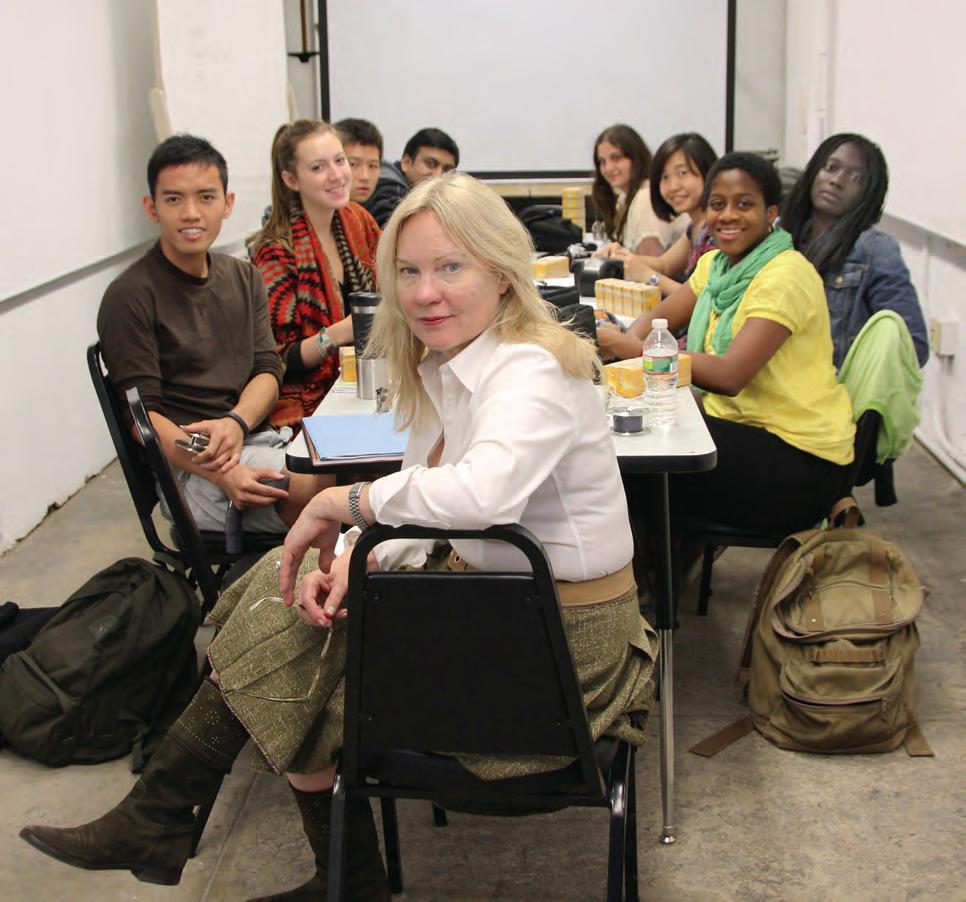
2 minute read
Princeton, Full Circle (2012
The Visual Arts Program in the Lewis Center for the Arts at Princeton University is pleased to announce that Sarah Charlesworth and James Welling will join the photography faculty. PRINCETON, FULL CIRCLE (2012)
128
GINA NANNI She was going to have the prestige of starting this program, heading up this department—it was a split position with James Welling. She only had to do it for half of the year. She would have the other half of the year to do her own work. She talked about it a lot and would say, “I’m excited about this. I’m afraid to talk about it.” And then she’d talk about it.
LIZ DESCHENES Without question, the appointment to being a tenured Professor at Princeton was of significant prestige and arrived at completely meritoriously; Sarah had been an esteemed faculty member at SVA for over 20 years, helping to make a department of rigor with strong faculty and students. It—Princeton—also came with a tremendous amount of responsibility: there was, of course, teaching and curriculum development. She and Jim Welling were building something there that Princeton had not invested in before—a strong contemporary Photography Department. From my vantage point of being an artist and a teacher, I believe that if Sarah had been a man there would have been a different conversation about that position. Developing a department in an Ivy League University was a major undertaking. Teaching impacts artists’ time for their work. Of course it is rewarding, but it can also be a sacrifice of time, missed events of one’s own work and career, and friends and colleagues. Teaching is a commitment and Sarah was remarkably conscientious and exceptionally skilled at being an educator.
SARAH It’s going to be a challenge to figure out what a photography program at an important Ivy League college could be. It’s not an art school. So it’s a different story than kids in graduate school that decide they want to be artists. These kids may want to be anthropologists or Eastern religion majors. So what does photography mean to them? I like the conceptual challenge. It’s curious to figure out the relationship between analog and digital photography and how to put together a facility and a program that teaches visual literacy, technical literacy, and challenges ideas and imagination. It’s a changing world.
NANCY DWYER I remember a dinner at Jo Bonney’s house not long after Sarah took the position, and how clearly pleased she was, especially because her father and other family members were alumni. It was uncharacteristic for her to show open enthusiasm, so I noticed.
SANDY TAIT I live in Princeton. During Sarah’s first year as a professor there, she would sleep over at my house once a week. I’ve chosen the words sleep over intentionally—it was a wonderful adult reinvention of a pajama party. She would arrive around seven, exhausted, but inspired after a long day of meetings and teaching. I would cook dinner, she would sip vodka, comment on my culinary skills and together we would laugh and talk—trying to solve the problems of our personal worlds and the world at large, too. Her counsel as a friend was direct and honest and I miss it. After dinner we would get into our pajamas, sit side by side on the couch and watch a movie. Sound fun? It was.
With Princeton students.
129










